How to mask pipes without duct?
Materials with which communications are closed must meet the following requirements:
- Easy installation.When masking pipes with your own hands, it is important that even a novice master cope with the task.
- Strength and wear resistance.If the structure is movable, then the material must withstand constant mechanical stress.
- Resistance to moisture. Condensation builds up on some pipes, and a sink or bathtub acts as a source of moisture in the combined bathrooms.
- Convenience and ergonomics.In typical apartments, toilets do not differ in size, therefore, not only the aesthetic component is important, but also space saving.
Pipes - common house property. It is important that, in the event of a leak or inspection, access to the devices remains open, therefore it is not advisable to construct blind structures. The main danger of the walled pipes is that when they let it flow, the process will go unnoticed. And when the neighbors from below notice the accident, they will have to urgently open the walls.
Before installation, all pipes should be put in order, valves and meters should be checked: this prerequisite will allow the products to last longer and avoid additional costs in case of an accident.
Using a plumbing cabinet, you can not only hide pipes in the toilet, but also create an additional place for storing construction tools or cleaning products. There will be free access to the sewer riser, and the bathroom will look aesthetically pleasing.
In the photo there is a cabinet in Khrushchev, made to order from chipboard. With its help it is easy to hide the pipes in the toilet and keep the room attractive appearance.
Tools and materials
A closet for a toilet can be ordered at a furniture company or do it yourself. For work you will need:
- Building level.
- Roulette.
- Screwdriver, screws, dowels.
- Drill.
- Jigsaw.
- Hinges for fastening doors.
- Blanks for creating a dressing closet: boards, chipboard, chipboard or MDF.
- Wooden bars.
- Covering film that protects the floor from damage.
Step-by-step instruction
Getting started:
- First of all, it is necessary to make all measurements and draw up a detailed drawing. Materials and accessories are purchased in accordance with the dimensions of the future cabinet, as well as the features of the layout and wiring of pipes.
- If the closet in the toilet is made of wood, the material should be impregnated with a water-repellent compound or varnished. Stain is also used: various shades can be used to make the cabinet more original.
- If there is a place for internal shelves behind the toilet, we make supports for them from corners or scraps of timber. We stack the shelves, having previously cut the holes for the pipes. If high loads are not expected, plywood can be used.
- To install the built-in closet, we make markings on the side walls of the toilet. We build a frame of timber, connecting parts with screws.
- We install the frame by nailing the corners to the walls and ceiling with dowels.If the arrangement of the pipes allows, you can fasten the side walls of the chipboard with a thickness of 16–18 mm to the full depth to the walls.
- We fasten the doors with screws or with a screwdriver to the vertical beam of the frame. Apartment owners often choose blinds, as in the photo below. They look stylish and modern, can be painted in any color, and the holes in the doors will help to ventilate the finished cabinet.
We close the pipes with plastic panels
A box or a false wall made of PVC panels is another cheap and practical way to hide sewer and water pipes in the toilet. Plastic is not afraid of moisture and fungus, it is durable and lightweight, easy to care for.
This method is appropriate if the entire bathroom is lined with PVC panels: then the box will fit perfectly into the interior. Installation of products with the right approach will not cause difficulties and will not take much time. In the event of an accident during the dismantling of the structure, the material will not be damaged - this is especially true for pipes that are not insured against leaks. After eliminating the damage, the box can easily be assembled back.
In the photo, the sewer pipes in the toilet are hidden in a box of plastic panels. Other walls are faced with ceramic tiles, but the finishing material is matched to the tone, so the difference does not immediately strike the eye.
Tools and materials
How to close the pipes with drywall?
A hyprock box is a product that even a beginner can cope with. First, as for PVC panels, a metal profile frame is constructed. Some use wooden blocks, but metal is considered a more suitable material. The frame is sheathed with moisture-proof drywall, since the toilet is a room with high humidity. It is recommended to decorate the finished structure with a suitable material: tile, mosaic, paint or wallpaper.
Pipes can be partially sewn up, giving the box practically any shape (for example, leaving space for the sink and faucet, rounding the water heater) or erecting a dimensional structure. If the pipes are located on the side or in the corner of the toilet, the creation of a box is the best choice, since as a result of installation a lot of free space will remain.
In the photo, the box is made of moisture-proof drywall with a communication hatch and porcelain stoneware.
Tools and materials
To hide the sewer pipes in the toilet with your own hands, you will need:
- Screwdriver and screws
- Scissors and scissors for metal.
- Level.
- Roulette.
- Spatulas.
- Drywall knife.
- Roller.
- Moisture-resistant drywall.
- Aluminum profile.
- Screws and dowels.
- Finishing materials, putty, primer.
- Reinforcing tape.
- Material for sound insulation.
The photo shows the minimum list of materials intended to create a drywall box.
Step-by-step instruction
Getting to the manufacture of boxes:
- We make the drawing in accordance with the measurements. Leave room for insulating material.
- We make markings on the floor and walls in accordance with the scheme. You can use a simple or laser level. We fix the metal guides with dowels.
- To make the crate more reliable, we create stiffeners: we cut additional elements from the metal profile, the width of which corresponds to the distance between the vertical guides. The corner profile is fastened on top and bottom by small self-tapping screws.
- Before sheathe the frame, make markings on drywall sheets in accordance with the drawing.
- We cut the material: with a knife we cut a layer of cardboard, slightly deepening the blade into plaster. Gently bend the sheet and cut from the opposite side.
-
Before closing all the pipes in the toilet with drywall, we cut out the inspection holes for the hatches and access to communications. Only after this we proceed to the casing. We attach the details of the drywall sheets to the crate and fasten them with screws. Irregularities are carefully trimmed with a knife.
- We eliminate the shortcomings (joints and pits from self-tapping screws) using plaster and putty: primer on the structure, then reinforce the corners with a special tape so that the solution does not crack when dried. Defects are eliminated by sanding sandpaper.
- Primer the surface again to improve adhesion. After the primer has completely dried, you can glue the ceramic tiles, mosaics and even mount the laminate. Durable porcelain stoneware will mask the hole if you use the tile as the facade of the door, as in the photo below. Also, the design can be painted or pasted with moisture-proof wallpaper.
We hide the pipes and leave access
Another modern way to mask pipes in the toilet is the roller shutters (or blinds), which were previously installed to protect the entrance doors from breaking. Today, these designs have received wider application in the house and perform the following functions: close the closet on the balcony, hide sewer pipes and are even used as a door to the pantry.
Roller shutters are mobile: they are easy to lift and provide access to communications and metering devices. The design has a smooth monophonic surface, but for greater attractiveness and comfort, you can choose models with a pattern that is applied by photo printing. Roller shutters are made in different sizes, and the opening method allows you to save toilet space.
In the photo there is a combined bathroom with a box in which access to sewer pipes is left. White shutters are used as a door.
Roller shutters are made of aluminum or plastic. The latter must be handled with care: despite their resistance to moisture and rust, plastic is not as strong as metal. Aluminum shutters are considered more suitable for the toilet: their cost is higher, but they are durable and aesthetic. This is especially true if the partition will often rise and fall.
Tools and materials
For self-installation, you will need:
- Roller shutters with a protective box, canvas and mechanism.
- Drill with drill bits for metal.
- Pliers.
- Hammer.
- Screwdriver.
- Scissors for metal.
- Screwdriver.
In the photo, a standard diagram of a product consisting of lamellas, a protective box, guide rails and a roller shaft.
Installation Instructions
To choose the right box, you must take into account the dimensions of the rectangular opening. Getting started:
- We completely clear the place intended for installation of the box. We determine the installation method. If the depth of the sanitary niche allows, the massive structure is installed inside: this arrangement looks more attractive:
- If there is not enough space, the box is installed outside:
- After installing the box, we adjust its position using the level. If the pipes below interfere with the closure, then the structure is mounted in two parts with a lift at the junction.
- We collect the canvas and attach it to the shaft. Set the stopper and check the ride. It is important that the shutters do not creak and go freely.
Specialists are usually involved in choosing a model and mounting. But you can assemble the design yourself, having studied the detailed description in this video:
Which way is better for a small toilet?
To build a complex overall partition in the bathroom, you will need a lot of material and free space, which means that the method is not suitable for a tight toilet. The best solution is the box, repeating the bends of the water nodes: they not only mask the pipes, but also serve as additional shelves for hygiene items. Various blinds also save useful space: unlike swing doors, they take up less space.
To minimize the loss of area of the bathroom, you can use the hidden installation of pipes. This option is suitable for small toilets. It is implemented at the initial stage of repair and only after the complete replacement of communications with modern ones. For flush mounting, pipes made of copper or plastic are used: they are sewn directly into the wall or floor. The strobes are made using a punch and a grinder in accordance with the number and diameter of the pipes. This solution requires considerable cash costs and certain skills. Do not forget about the holes for access to the counters.
What other options are there without repair?
In order to hide the wall with pipes without unnecessary costs, it is recommended to use ordinary blinds. This budget way is perfect for those who do not want to build complex structures or are considering a temporary option. Wooden blinds fit perfectly into the eco-style, and plastic blinds - in a modern one. But if the interior of the bathroom is made in a classic style, the products are unlikely to fit into the overall design.
Plastic blinds will last as long as possible: they are practically not afraid of water, it is easy to care for them. A wide range of products is presented on the modern market, which allows you to choose a design for the color of the finish. Unfortunately, the blinds do not have sound insulation, and also do not completely block the pipes - a separate box will have to be built for the bottom.
If major repairs are not planned, and the pipes do not fit into the interior, you can order a special hanging cabinet. Its installation will not take much time, but part of the communications will be hidden.
Many women will appreciate another idea of decorating pipes in the toilet: an ordinary roller blind will help hide unsightly elements - the main thing is to purchase a product that is suitable in width and height. With its placement there will be no difficulties. Roller blinds are distinguished by a wide range of colors, and the material is protected by special antistatic and antibacterial compounds.
In the photo, bright blinds located at an angle successfully hide communications. In an emergency, they will instantly shut off the water supply.
For lovers of the loft style, the situation is even simpler: if the toilet is designed in an industrial style, the pipes can serve as an excellent decor that combines with the chosen style. It will only be necessary to put the communications in order, eliminating the defects, cleaning off the old layers or simply replacing them with modern ones.
In the photo, the loft-style bathroom - the brickwork serves as decoration, and the black pipes near the sink are painted in a single color. Standing out against a terracotta background, open pipes become one of the main highlights of the interior.
Photo gallery
There are many ways to mask pipes in the toilet: each of them is good in its own way and is possible in almost any room. The final result depends on the personal preferences of the owner of the apartment, as well as the budget and interior styling. In the photo gallery, we published several interesting examples that can help in choosing the right design.


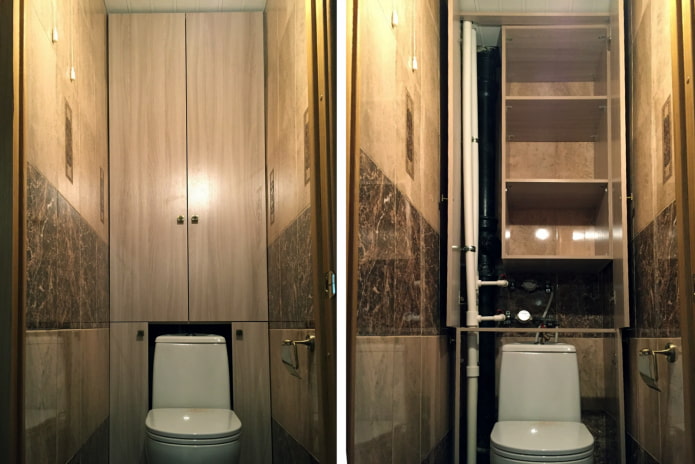
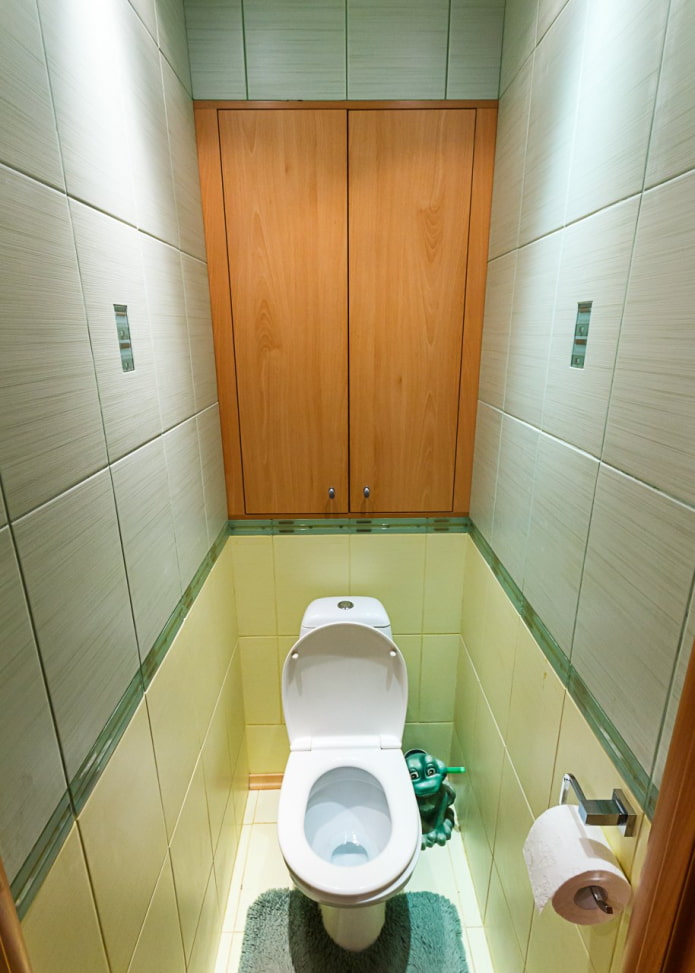

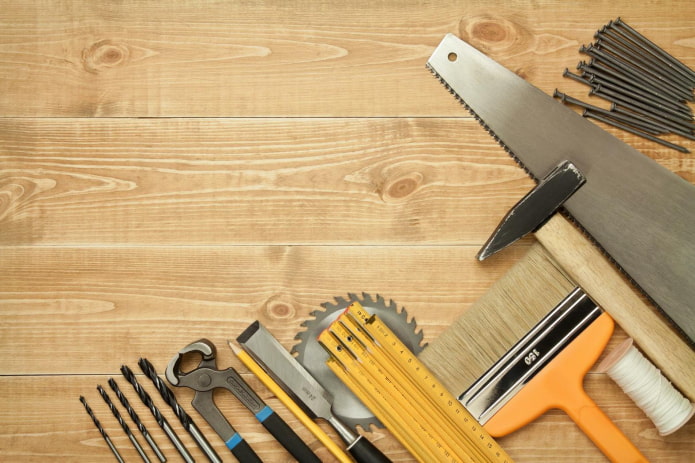
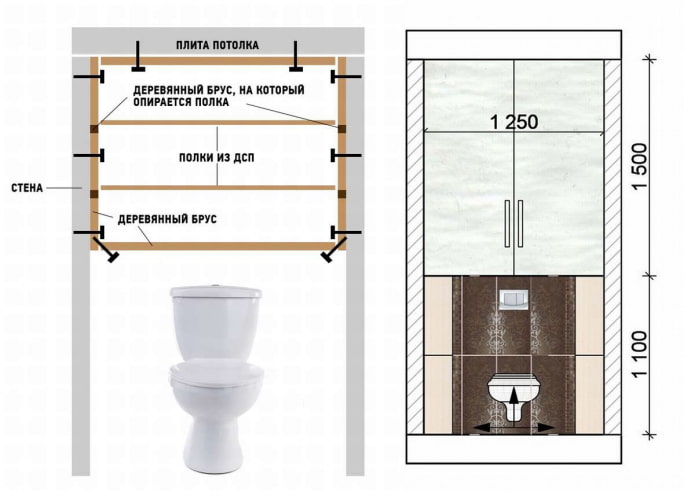
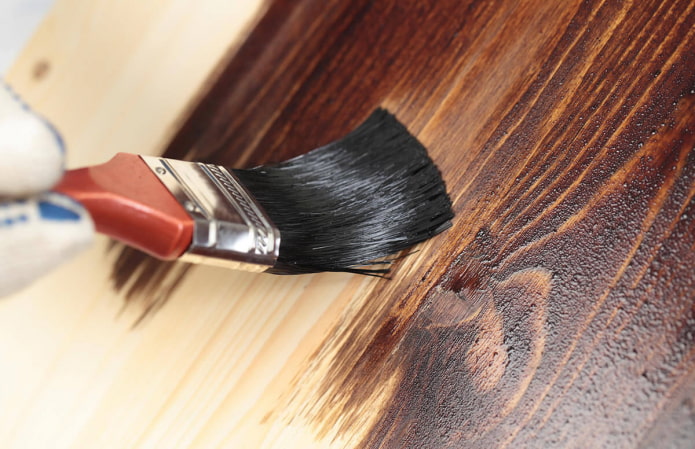

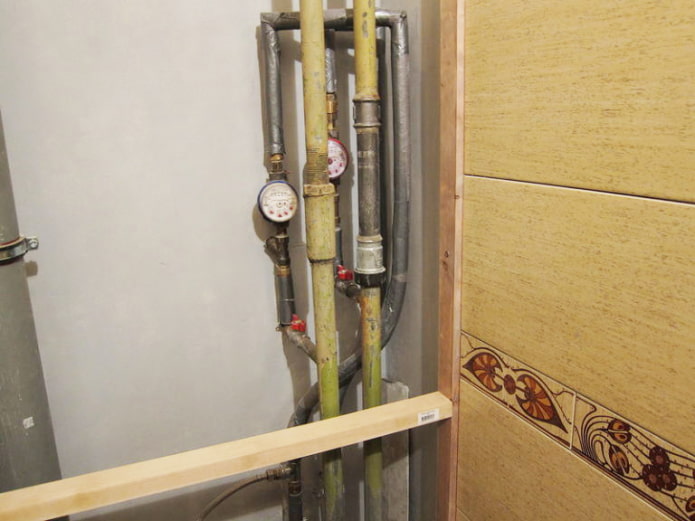
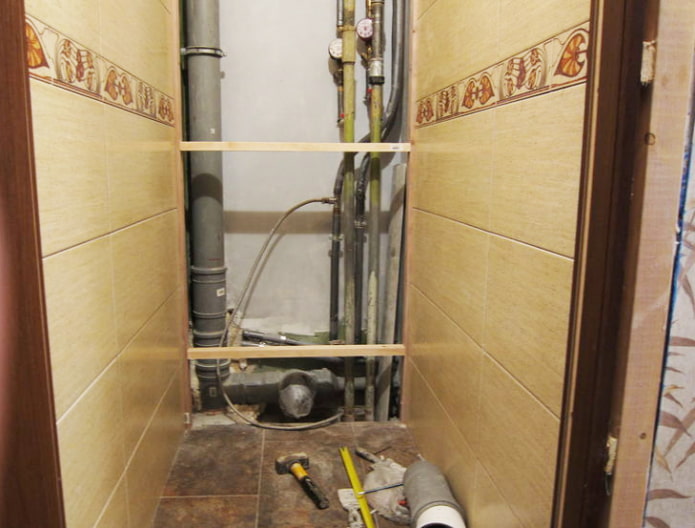

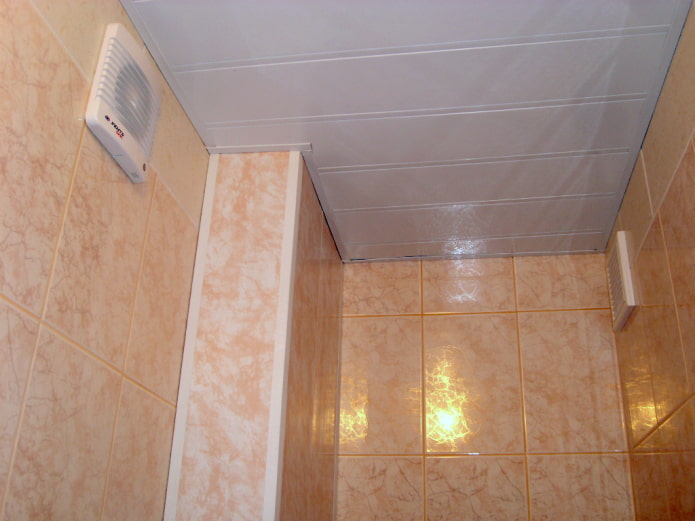
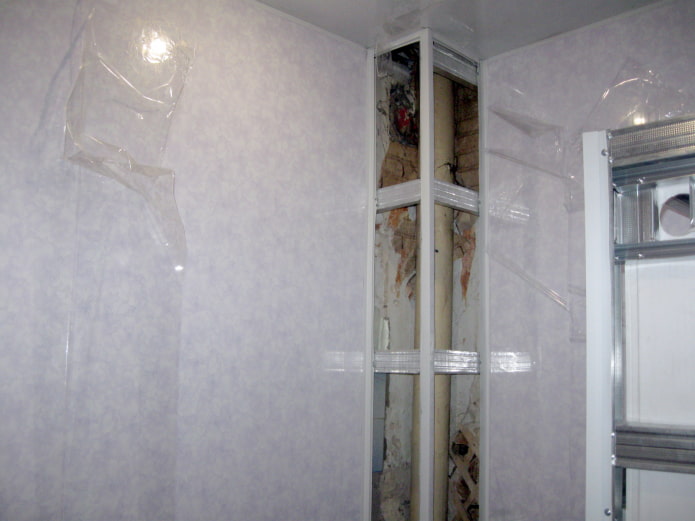
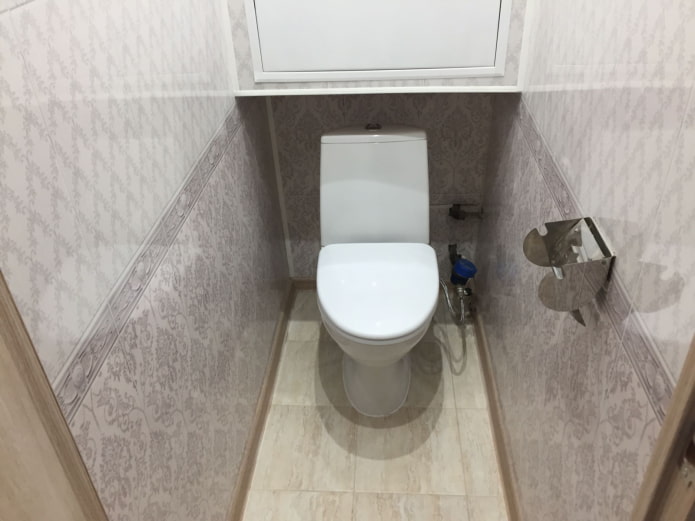
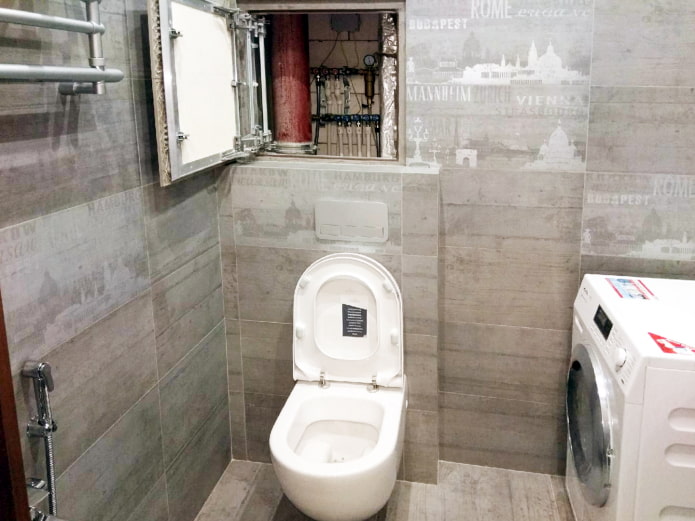
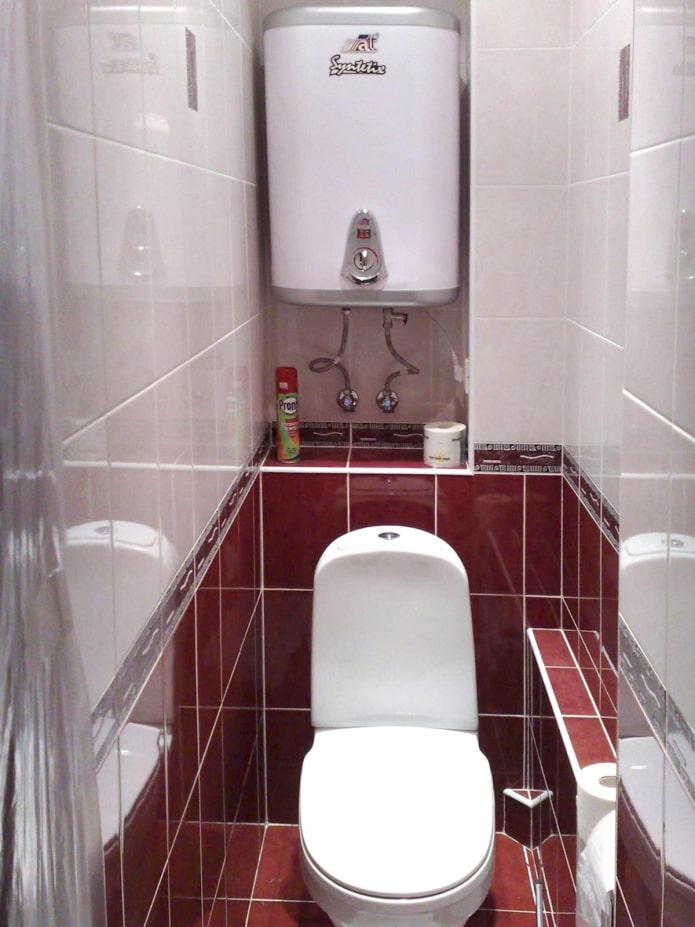
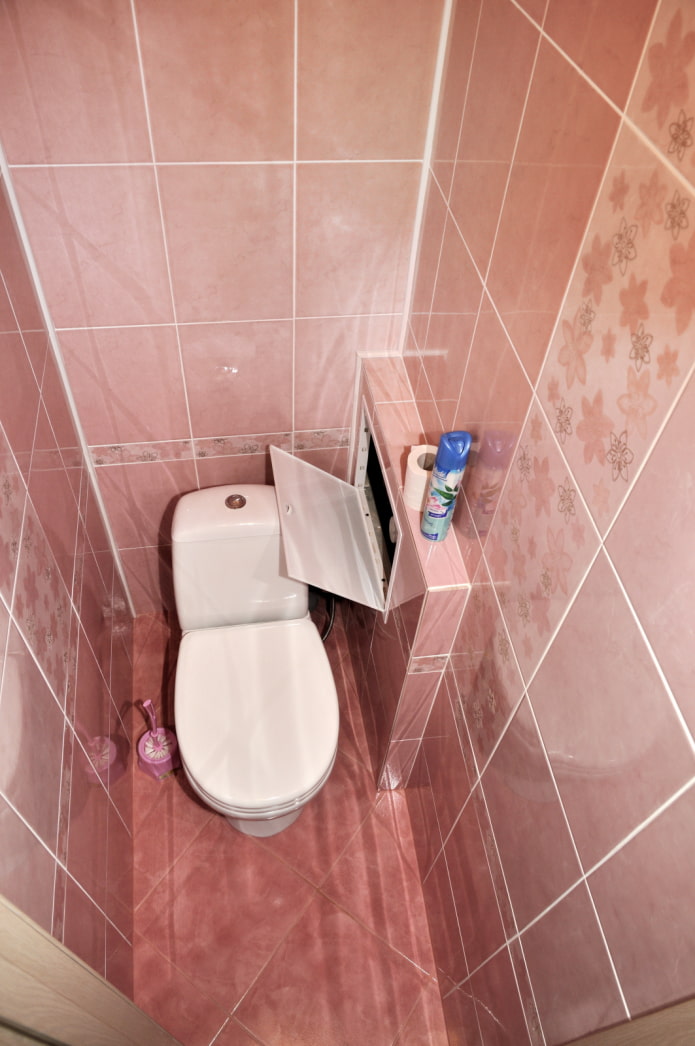
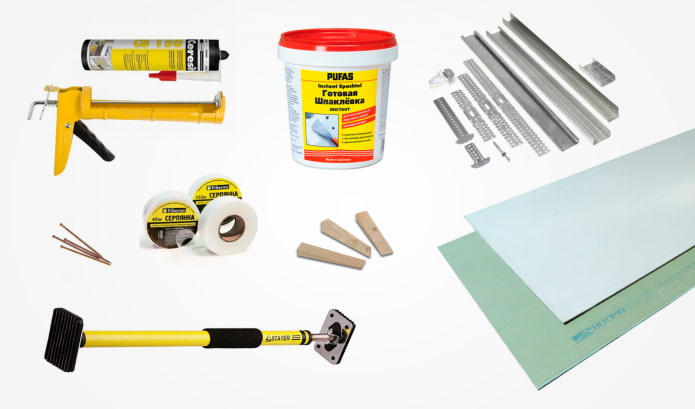

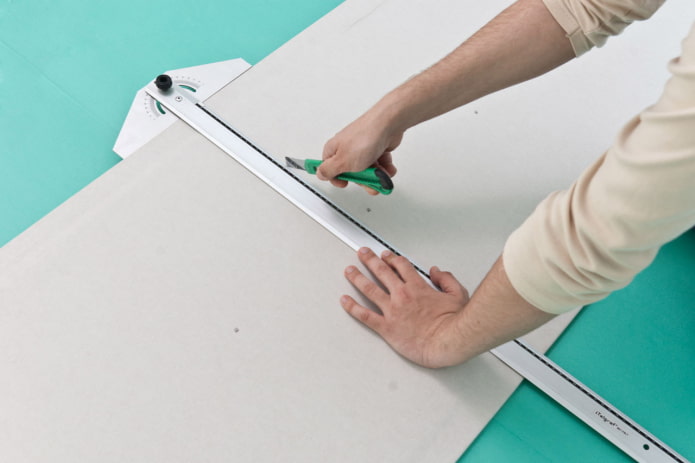

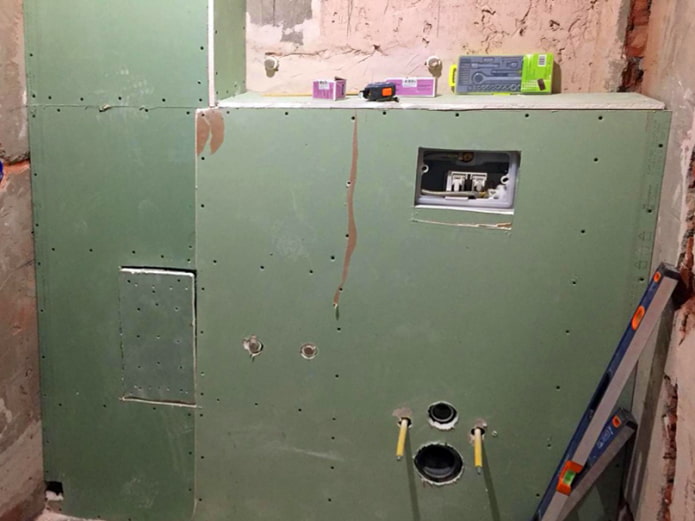
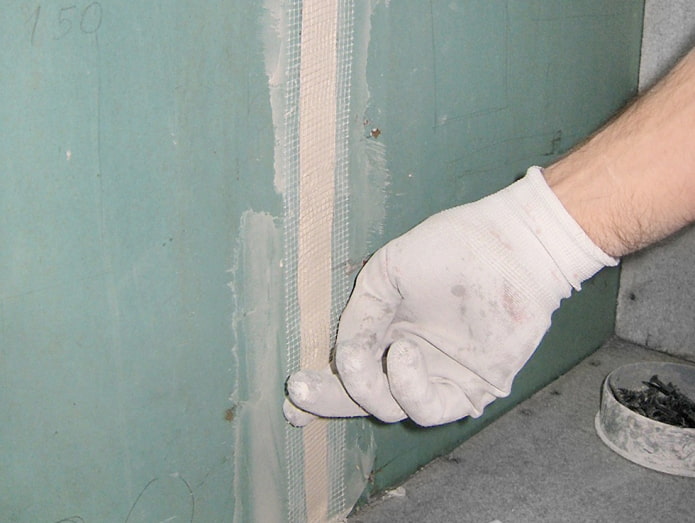

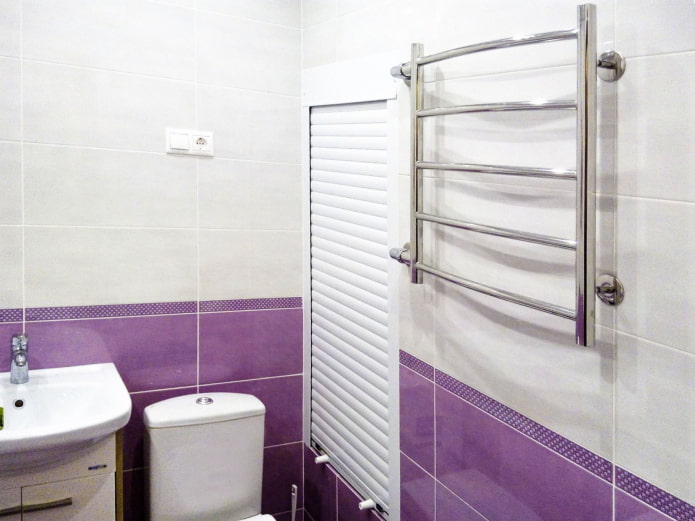

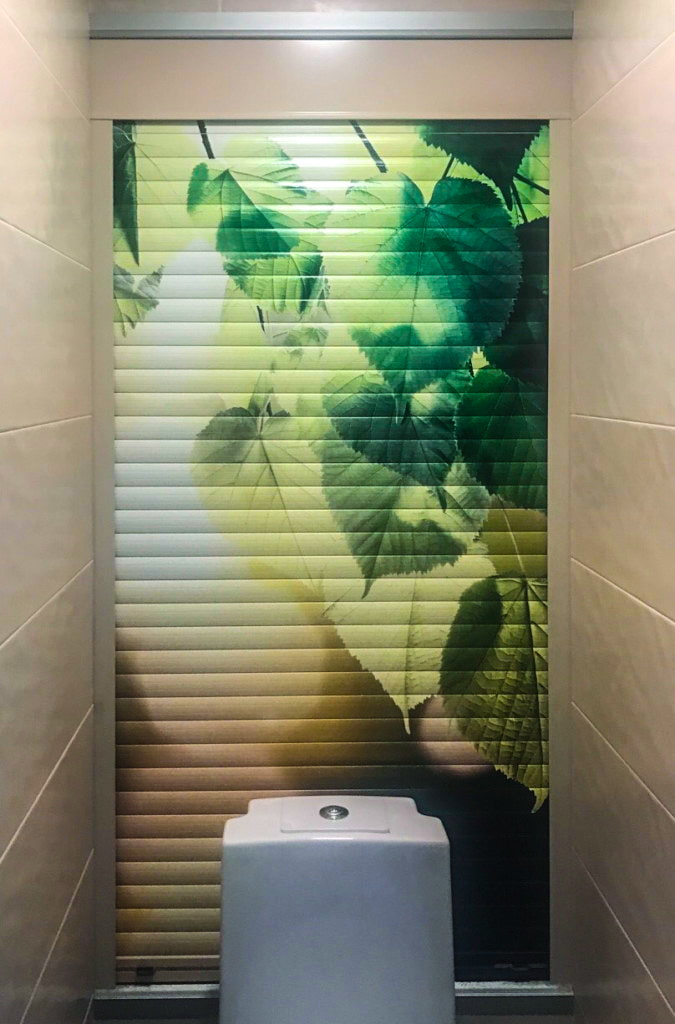
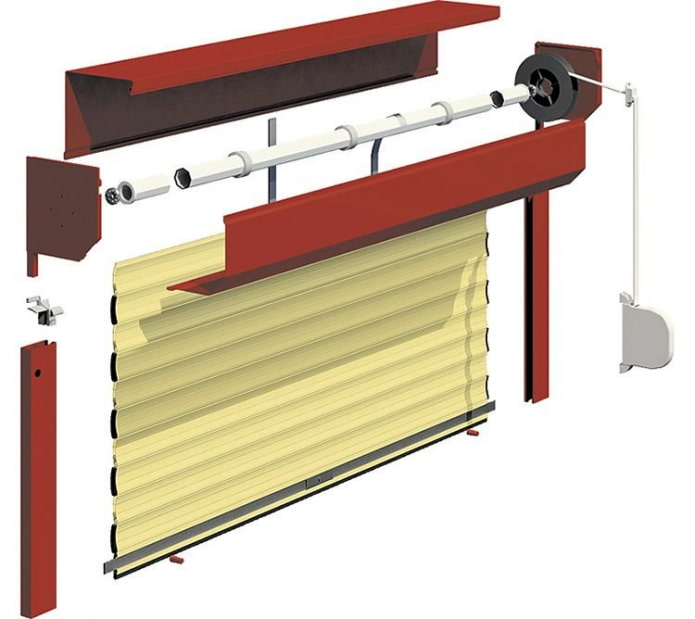
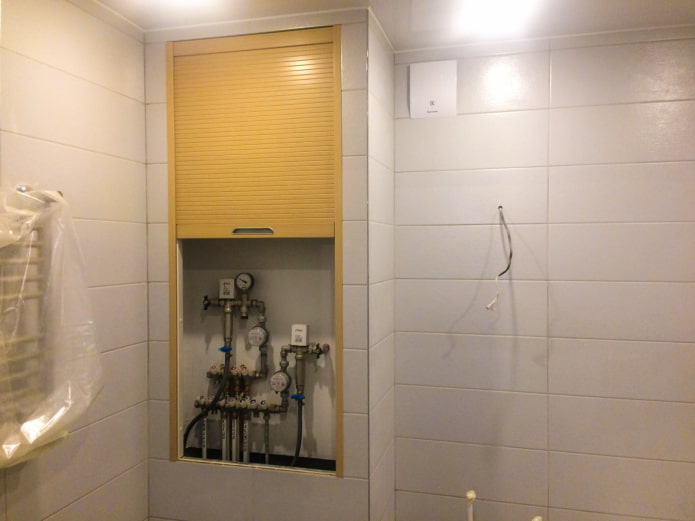
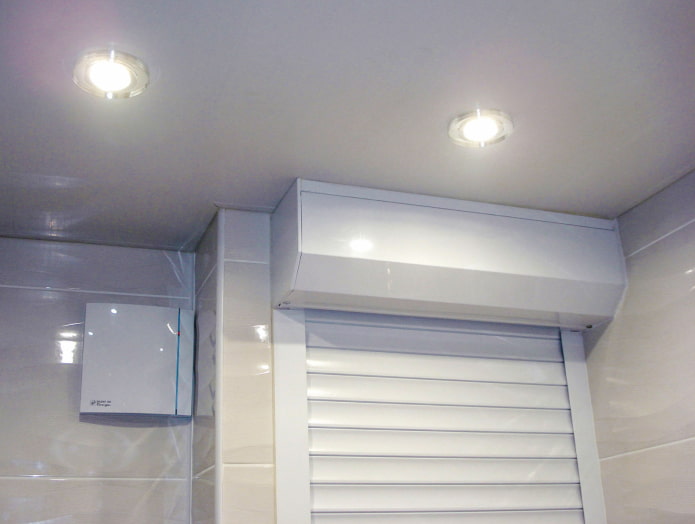
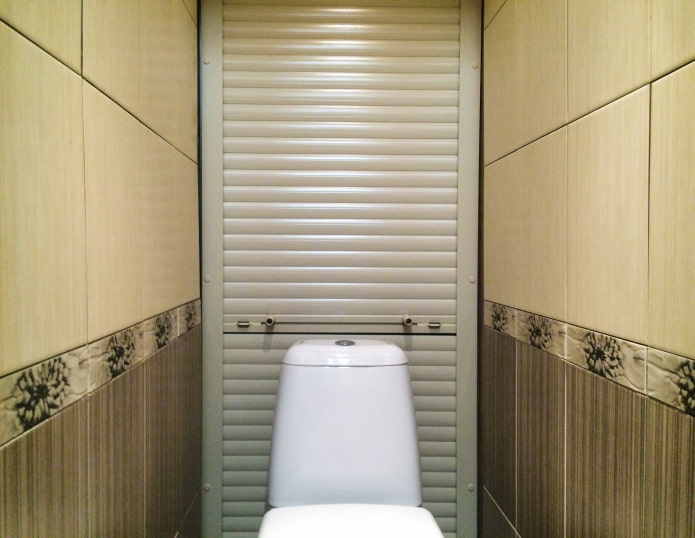
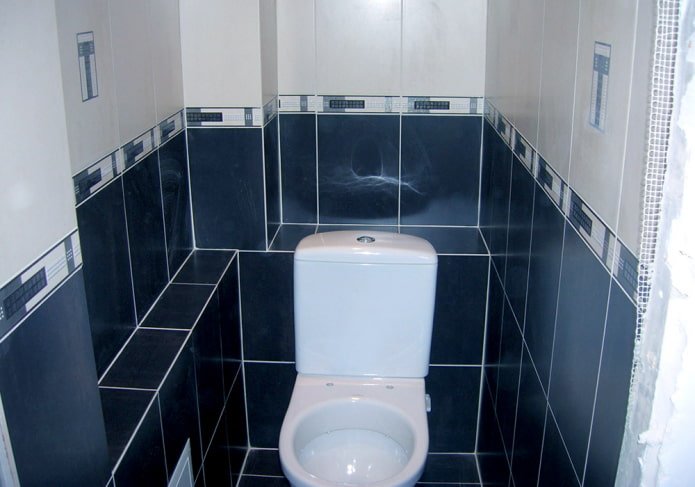
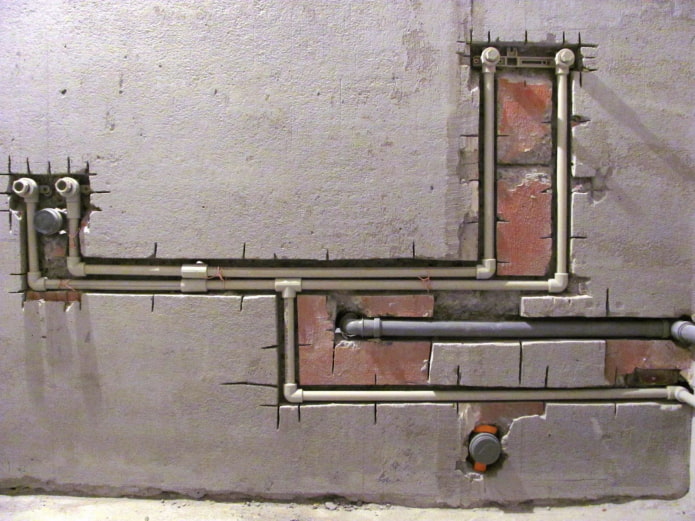
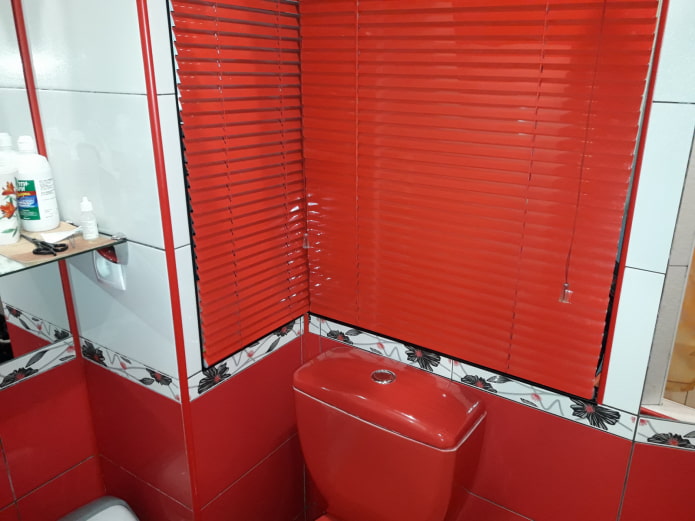
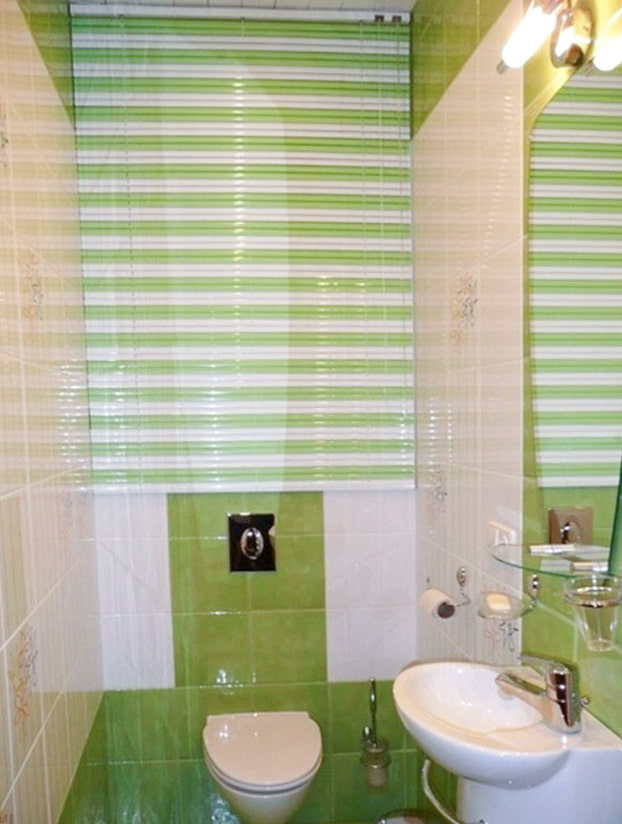
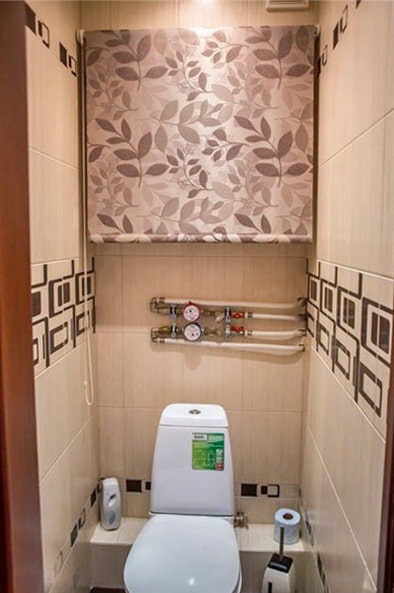
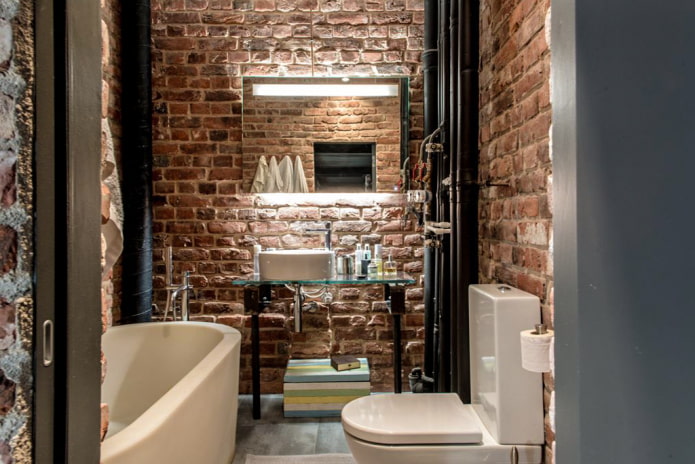

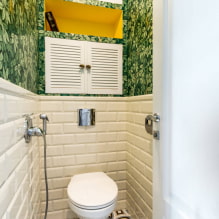

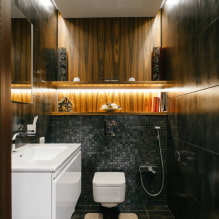
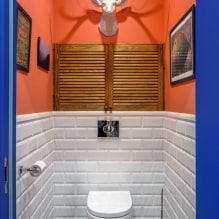
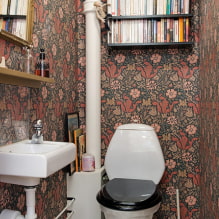
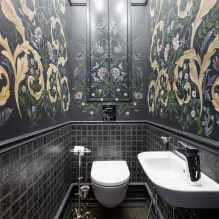
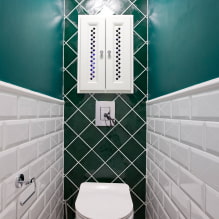
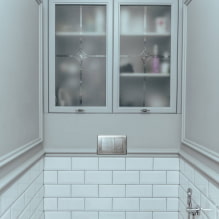


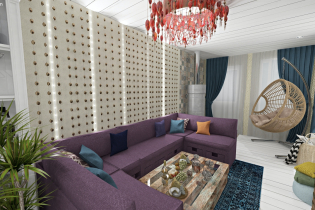 Layout of the apartment: how not to make a mistake?
Layout of the apartment: how not to make a mistake? Stretch ceiling in the bathroom: pros and cons, types, 55 photos in the interior
Stretch ceiling in the bathroom: pros and cons, types, 55 photos in the interior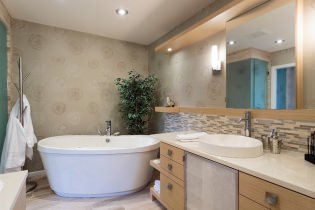 Wallpaper for the bathroom: pros and cons, views, design, 70 photos in the interior
Wallpaper for the bathroom: pros and cons, views, design, 70 photos in the interior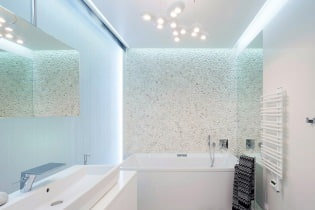 The interior of the bathroom in a modern style: 60 best photos and ideas for design
The interior of the bathroom in a modern style: 60 best photos and ideas for design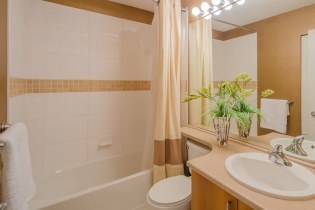 Modern design of a small bathroom: the best photos and ideas
Modern design of a small bathroom: the best photos and ideas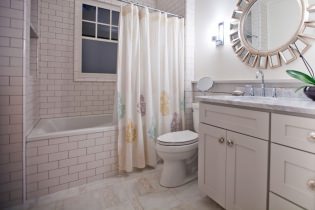 Bathroom blinds: types, materials, mounting methods
Bathroom blinds: types, materials, mounting methods
The photo shows the accessories for plastic panels: finish profile, connecting profile, inside corner and outside corner.
Step-by-step instruction
We cut the audit holes and close them with hatches. One of the panels can be fixed with silicone sealant to have access to the pipeline elements. At the joints we install plastic corners and skirting boards, fix with glue or "liquid nails". PVC plates are both the main and the finish, so they are so popular in Russia. The photo shows how the back wall of the toilet began to look neat after masking the pipes.